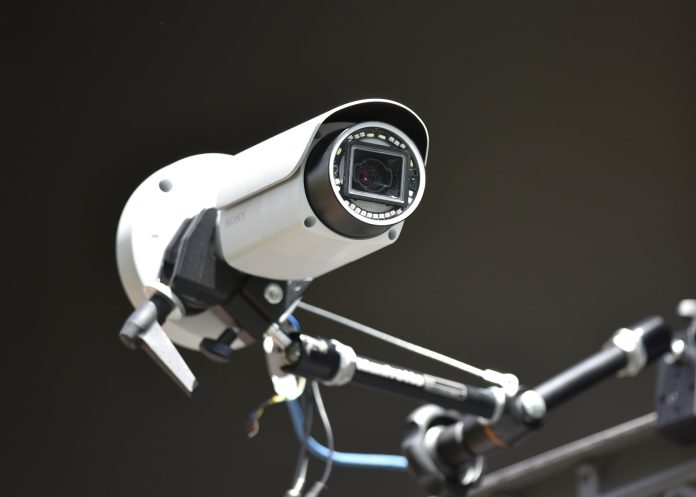Sony’s SNC-VB642D 1080p bullet camera is an affordable and extremely flexible surveillance camera that has a few tricks up its sleeve enabling it to ensure the best possible operational outcomes in extremely challenging environments.
The Sony SNC-VB642D bullet camera is a day/night 1080p, IP66 and IK8 bullet camera with a motorised 3-9mm F1.2 lens giving 3x optical zoom and auto focus, a 1/2.8-inch type Exmor R CMOS image sensor and XDNR processing, which Sony says improves low-light performance, delivering a minimum scene illumination of 0.006 lux (30 IRE) in colour mode at up to 60ips in H.264 or JPEG.
This camera has a WDR range of 90dB with built-in infrared illumination that’s coupled with Advanced IR technology to capture near and far objects without the flare of IR overexposure. The SNC-VB642D can view objects in darkness at distances up to 100m (30 IRE) from the camera. There’s also analytics controlled white light, which has a range of 7m and is ideal for use around building entrances.
Minimum scene illumination is 0.01 at F1.2 (at 3mm and 1/30th of a second and 50 IRE). The IR illuminator has twenty 850nm LEDs and offers a distance of 60 at 50 IRE and 100m at 30 IRE. There’s also a white light LED array with a working distance of 11m at 30 IRE and 7m at 50 IRE – we’re at 30 IRE for this test. WDR is 90dB with View-DR technology activated and the signal to noise ratio is more than 50dB. Shutter speed is 1-1/10,000th of a second, and there’s exposure control, exposure compensation, shutter speed and iris control.

There’s also auto white balance, ATW-PRO and colour temperature settings for fluorescent lamp, mercury lamp, sodium vapour lamp, metal halide lamp, white LED, one push WB, manual, indoor and outdoor. Angle of view is 35.6 to 105.3 degrees and the vertical viewing angle is 20.1 to 56.9 degrees, aperture is F1.2 wide open, closing down to F2.1 at 9mm and the hyperfocal length is 300mm.
Other features include image rotation of 90 and 270 degrees, mirroring, tone correction visibility enhancer, XDNR noise reduction, electronic image stabiliser, 20 privacy masks, SDXC storage slot, voice alert, CBR and VBR bitrate control, 3 streams and 20 clients, intelligent video and audio analytics using DEPA advanced, intelligent motion detection, face detection, tamper alarm and scene analytics including passing, intrusion, left object detection and removed object detection. The audio compression format options are G.711/G.726/AAC.
Taking the camera out of the box I can see the VB642D is well built. Perhaps it’s not quite as polished as some Sony products – external bullet cameras built to take knocks seldom are – but the cast alloy base and rear-body, and the quality poly that make up the front of the camera body and sunshade have good hand-feel. During our test the lack of chromatic aberrations, ghosts, blooming and smearing, suggest solid engineering at multiple levels.

Before we push on it’s worth talking a bit about the Sony Exmor R chip inside the VB642D. This chip represents a major development, with back illuminated architecture enhancing signal transmission by moving the read circuitry from the front of the sensor, where it traditionally has taken up space between lens and photodiode. Exmor R delives photons over a more direct path to the photodiode meaning less attenuation of the light signal. Exmor R also is able to capture photons entering pixels at greater angles of incidence with more efficiency than front-illuminated sensors. At apertures wider than f/2 back-illuminated Exmor R sensors are more efficient and less prone to vignetting.
According to Sony, Exmor R sensors also reduce random and fixed-pattern noise by converting pixel charges into digital signals earlier in the readout process than rolling shutter sensors. They achieve this by reducing the length of the internal analogue signal path. Further reducing noise is correlated double sampling (CDS), a process of reading each pixel twice to removes unwanted noise before the analogue-to-digital converter (ADC). CDS is also used after the ADC to verify the accuracy of its output.
Test driving the Sony SNC-VB642D
We’re using SEN’s dedicated Dell Optiplex 9020, with its i7-4770 processor offering 3.4GHz of processing, 8GB of RAM and AMD. This server is a few years old now, but it still has plenty enough horsepower for our small CCTV subnet. The camera is supported by a NetGear GS108P PoE switch. There are no other cameras on the network.
All my settings are very close to default but with brightness and sharpness up a couple of stops. My first impressions are that the camera is a little soft at 3mm but tightens up as you zoom. From the get-go I can see it’s unusually good with license plates from about 5mm onwards. I also notice a little pulsing of the image stream, even in good light, as well as what seems like some mild tone mapping – it’s too bright out front for this to be a matter of shutter speed.

However, it’s possible that what I’m seeing is a characteristic of the Exmor R processing engine, which may be paying special attention to changing pixels. In any case, none of this seems to have any impact on the camera’s ability to get fast moving plates. There’s occasional stepping of the image stream, too, which might relate to buffering by the processing engine as it undertakes those multiple steps.

The zoom is solid – even though it’s only 3-9mm, it really makes a difference in my street scene – it’s not so long that I ever zoom out of context, either. Re-focus is on the good side, too. Not as fast as the fastest auto focus functions we’ve seen but in the top category. The camera’s ability to handle variable light is excellent – the shaded areas are very well handled, and the bright areas remain extremely consistent with no over-exposure whatever. Many more expensive cameras can’t manage as well as this out here. Colour rendition is also very good. There are no discernible chromatic aberrations. There’s barrel distortion at the wide end – about 8-9 per cent – but by the time I’m at 5mm, there’s no sign of it.
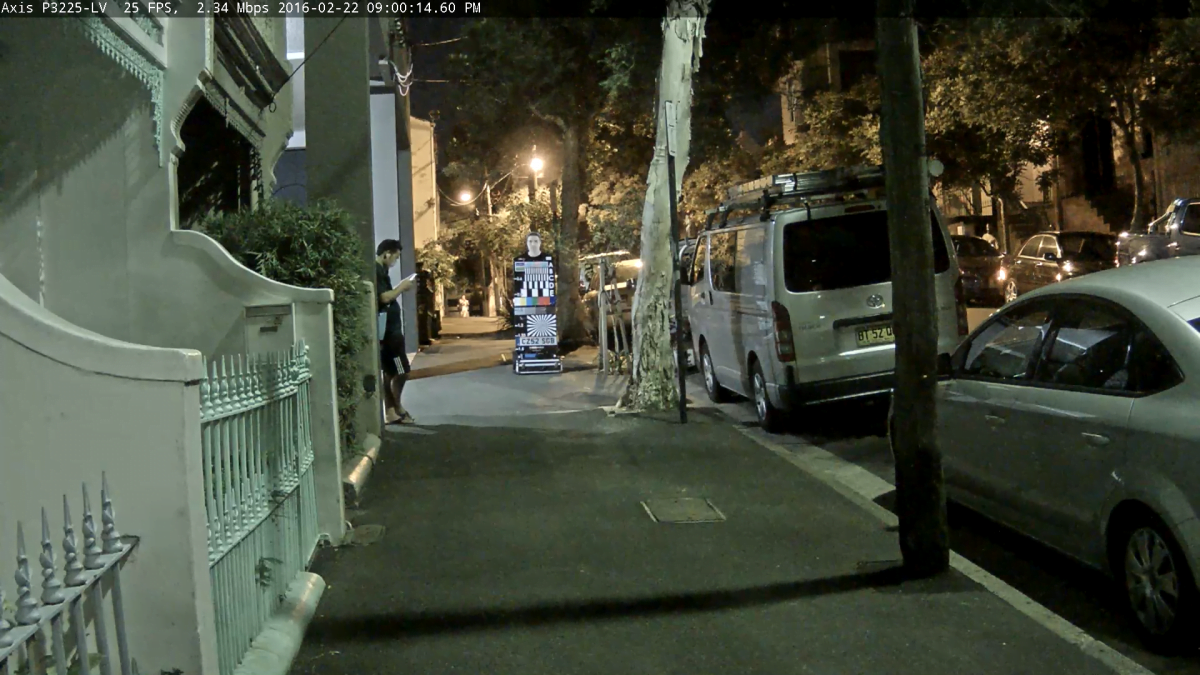
A few days later I take Norman out front to test WDR performance. It’s more than 80,000 lux out on the street. Performance in this level of backlight is seamless. The whole image is very Sony – very well balanced. WDR is brushed off by this camera – it’s a non-issue. Again, I see no chromatic aberrations in these tough conditions at wide or long ends, which is unusual.
Again, I notice underlying processing swim – it’s screen wide so can’t be an elevation of processing for region of interest and I’m starting to think it’s to do with the way the Exmor R delivers an image stream. There’s also that characteristic once-per-second pulsing you see with many cameras. Once again, neither of these things seems to impact on image quality but for sharpness at the wide end where it teams up with pixel spread.
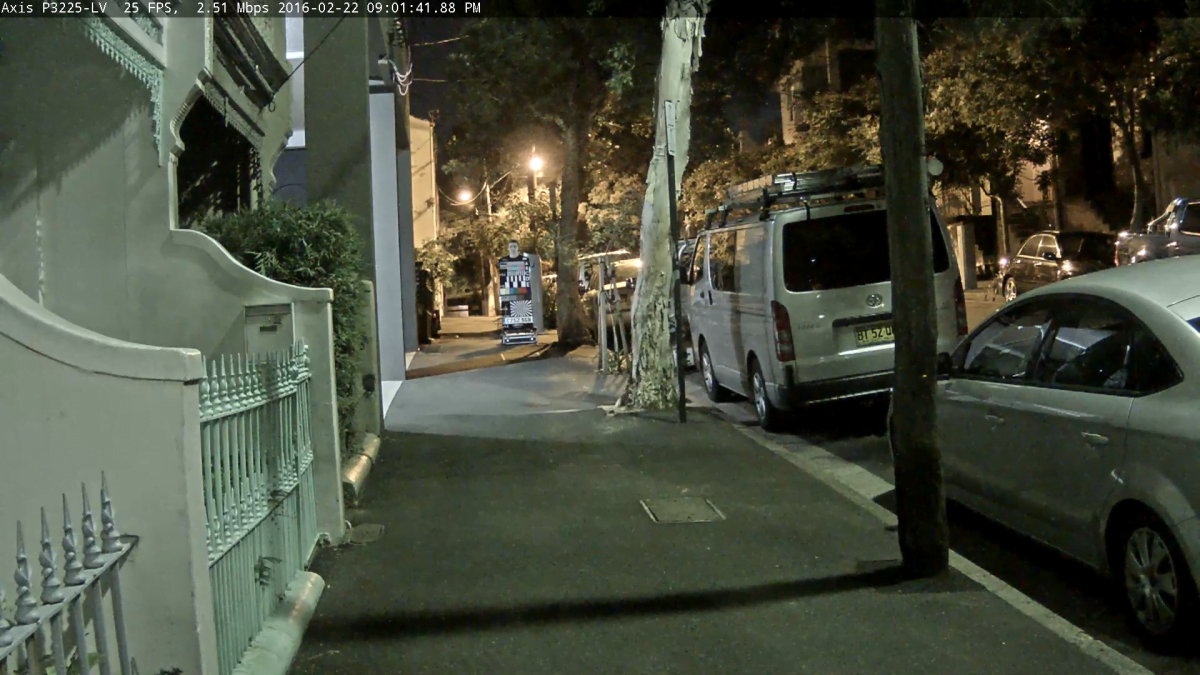
The ability to handle intense variability of light in challenging scenes is confirmed out here. The camera is also a gun performer for nabbing plates – it’s good wide open, better still as you start reeling in the motorised zoom. On that topic, Sony’s zoom function in the browser is 50 for the wide end (3mm) and 656 for the long end (9mm). I play with all these settings but settle on 500 – that’s around 7mm – for this front street scene. I have the camera pointing a little high to ensure my fully zoomed street scenes retain context and offer me the best possible angle of view and sharpness to go with the excellent colour rendition, WDR and variable light performance. This costs me coverage directly in front of and below the camera, but the price is worth paying, given the benefits of digital zoom when it comes to getting moving plates.
As the day wears on and shadows deepen on the street, the camera remains good with plates from about 5mm onwards and it holds this capability as the light fades. I notice that even with frame rate set at 25ips it seems a bit lower thanks to occasional stepping. It’s hard to know what this is – it seems to me my earlier summation is correct – the camera is stepping the video stream to buffer what’s coming from the sensor and processing engine. There’s a little more than the usual amount of latency – perhaps 350th of a second, maybe a little higher.
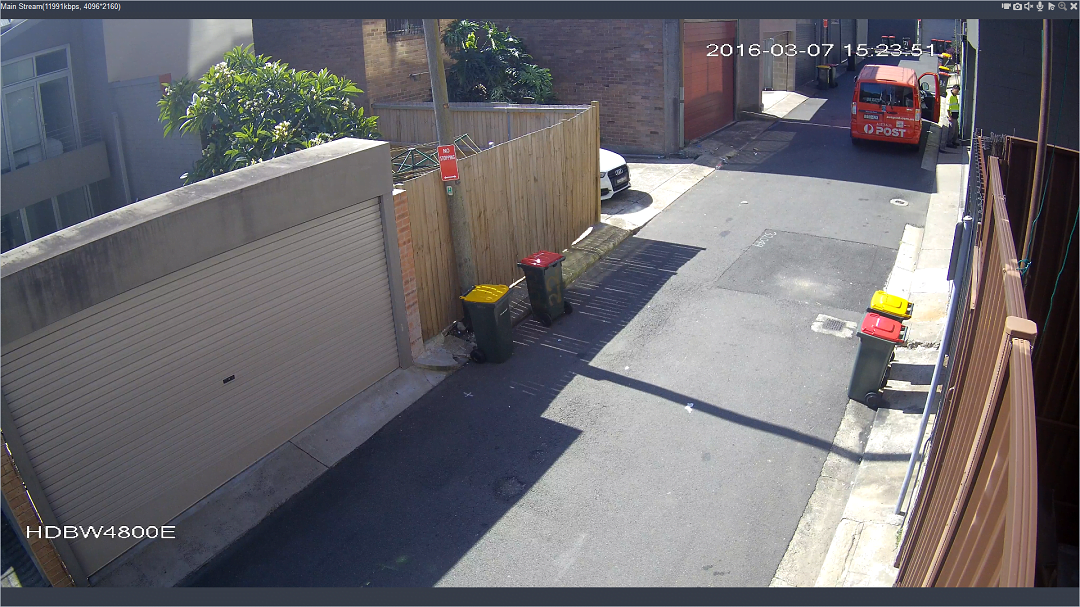
That night I take the VB642D out the back. As light levels fall, the image processing becomes a little more noticeable but much less than I expected it would. It’s been a very windy week and the fence I’ve got the Sony mounted to is moving around a lot – this makes assessing noise more difficult. Regardless of fence movement, the image stays tight as light falls. I first notice amplification stress starting to intrude in the form of slight smudging in areas of darkness that are also in shadow at around 720pm, but it’s not too intrusive ten minutes later and after a while I stop wondering if it will increase.
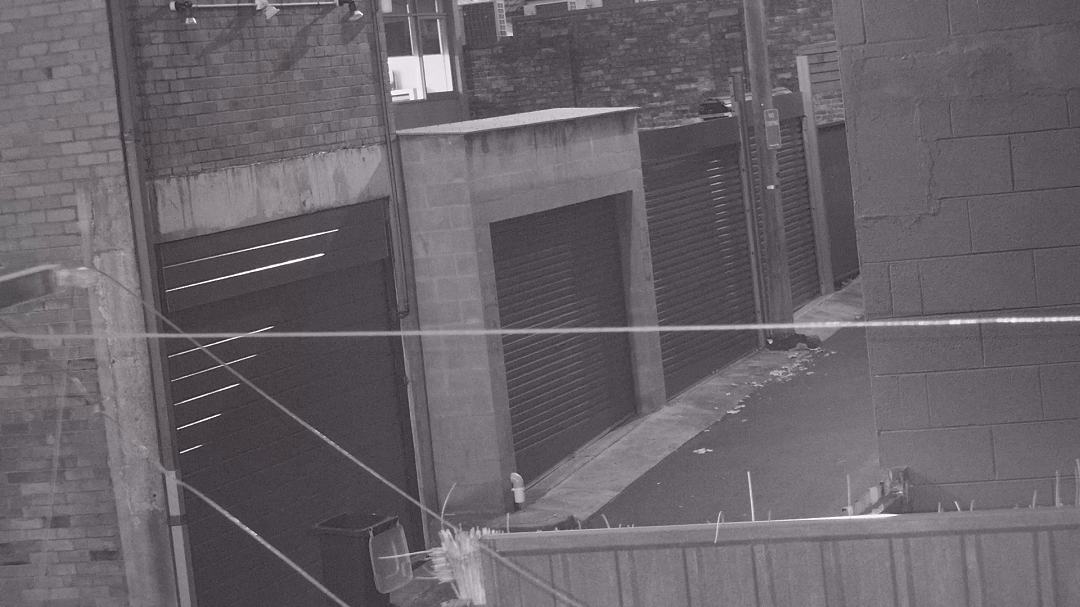
By 7.55pm, it’s dark out the front but things look a lot brighter out the back thanks to the lack of building shadow and exposure to the western sunset. There’s a bit more noise but it’s nothing to write home about. As the time moves past 8pm, the camera’s appearance on the monitor starts losing touch with the level of light I can see through the back door. The image has barely changed all afternoon. Something that’s interesting is the fact colour rendition is virtually unaltered.
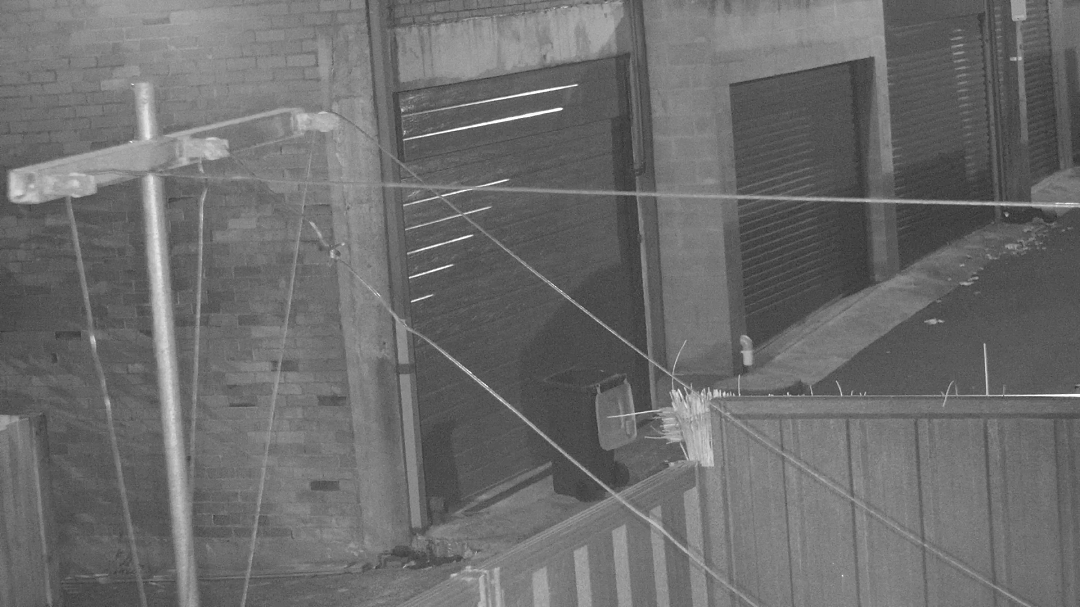
I’ve been at a zoom of 500 all afternoon so I pull back to 300 and while this wider angle of view tells me the neighbours have their lights on, but not much else has changed. I go to a zoom of 656 (9mm) and now I can see a little greenish yellow colour from the low-pressure sodium street lights but it never causes colour cast – this camera handles colour temperature variations very well.

By 815pm, the street lights are on and it’s full dark out front, with not much light left in the sky out back. A car comes down the lane and I can see that the camera handles blooming well, too. Instead of a blob of red from brake lights around 10m from the lens, it’s delivering fat, 4-pointed aperture stars. Noise is still there but is no worse – the wind, however, is much worse. At this point, I quit the test for the night.
Next evening in full dark sitting at my workstation after tweaking zoom, I can see the camera is retaining colour – it manages this without any huge increase in noise. In the back lane with sub 2 lux at the lens, the camera does exhibit some interesting behaviour.
At first, I think the scene might be a little too light – the camera keeps hopping from night mode into day mode and while in day mode offering a surprisingly good colour image. After a couple of minutes, the camera returns to night mode and the IR comes on again. It takes longer than it ought to have for me to realise the camera is picking up movement in the windy scene and activating the white light every few minutes. More on that in a moment.
The IR range of the VB642D is said to be 100m but I don’t have the depth of field and complete darkness to assess that – it certainly covers my application strongly, with a good even spread. The less light there is on the scene the better it appears to be. When I shift the angle of view off the lane and across the rooftops towards the district, the IR really comes into play. Performance is more than useful – the IR does drill into the scene at longer focal lengths.
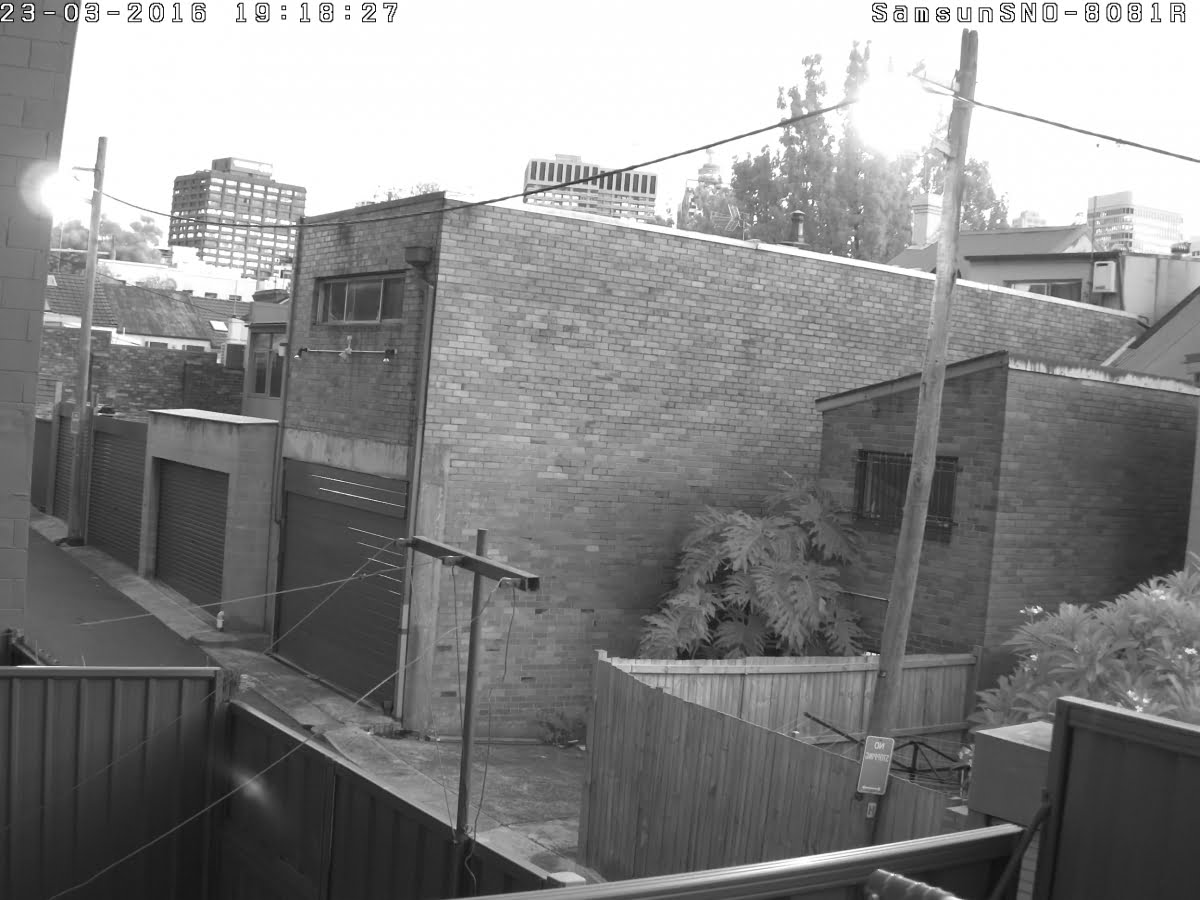
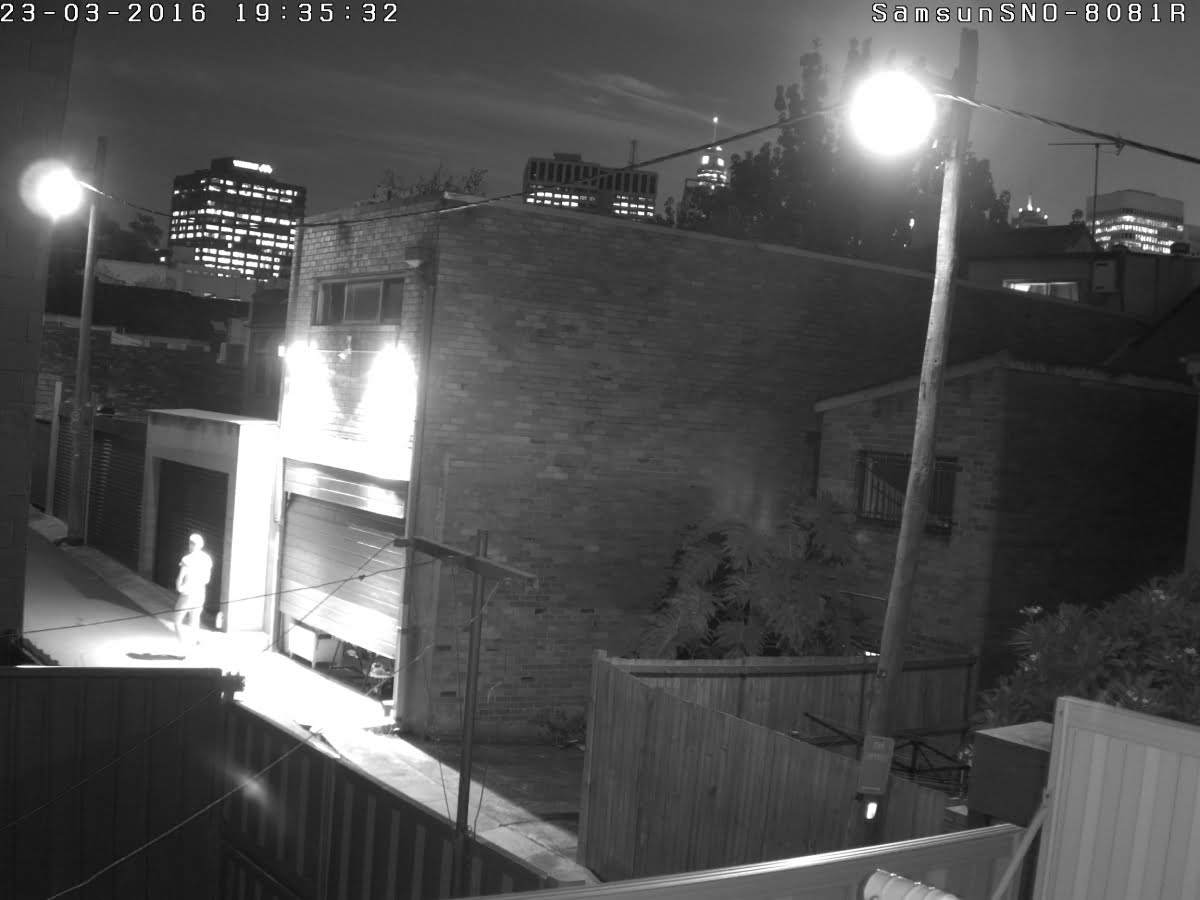
Having played with IR for a while I notice that whenever I select a wider angle of view the camera will detect the movement of the zoom as movement in the scene and hop into colour mode activating the white light array. Not a bad way to get an intruder to look at the lens of a camera to give best possible faces, I think.
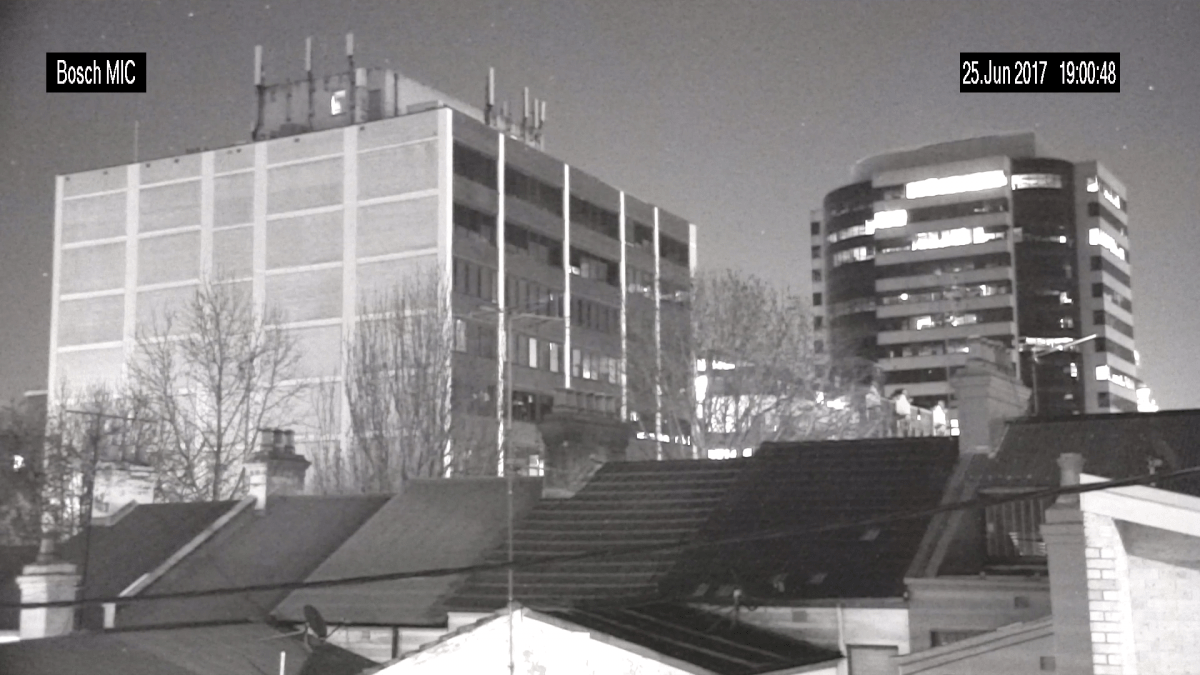

This is unusually good performance in sub 2 lux – car speed around 15kmph.
While in colour mode with the white light activated a car comes down the lane at about 15kmph and I grab a shot at about 8m from the lens – when I look at the snapshot I’m amazed to see that I got the license plate. Not a grainy half-imagined license plate but a real, sharp plate.
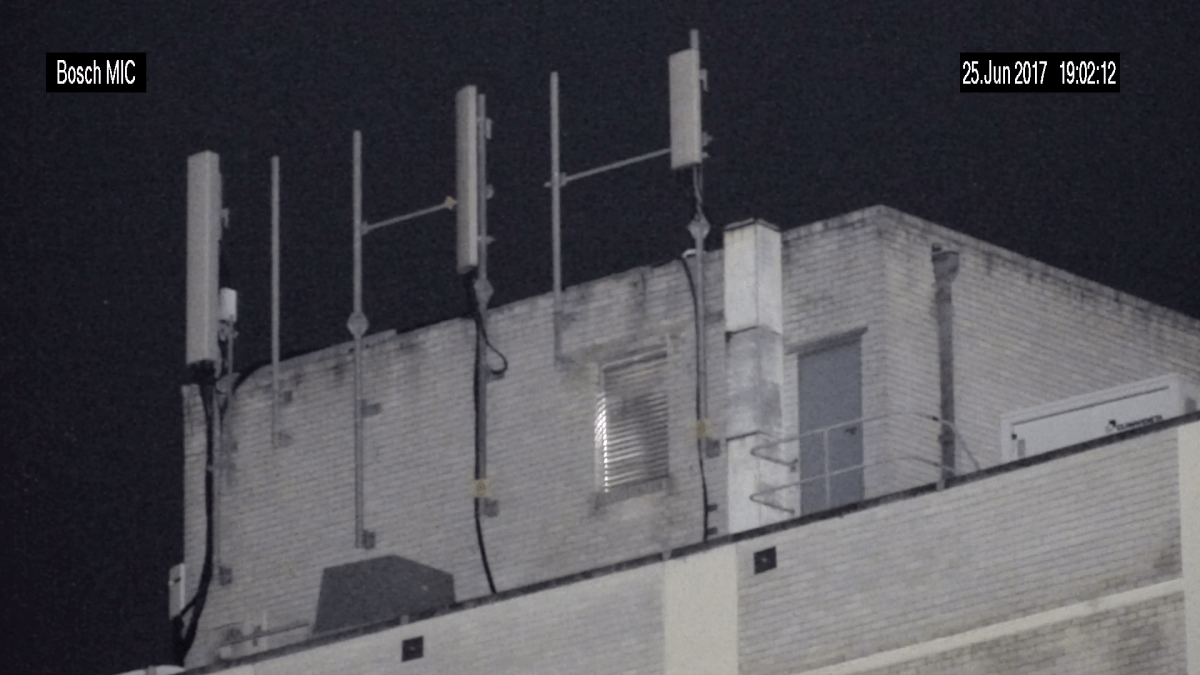
Through the office I scamper and climb up onto the fence – yes, the white light really is activated. A neighbour comes down the lane with his dog and again the light activates. The white light array reduces blur and gives me a pretty good general image across my angle of view. There’s too much amplification to say I’ve got guaranteed admissible faces but they are certainly recognisable at close range – 10m and under.

Next, I get Ronnie out into the lane and when I start him up 8m from the lens he immediately trips the white light. Looking on screen I can see there’s amplification noise but very little blur. I force the camera into night mode and with IR activated there’s not much in the way of blur, either. Looking at the images later I decide the colour image supported by white light is superior to the IR but there’s not as much in it as you’d expect.
Conclusion
Sony’s VB642D is an unusually good camera that manages its work in ways I’ve not seen before. With its slightly noisy image stream I was prepared to be disappointed, to consider this a camera built to a price. But there’s much more going here. Thanks to Exmor R processing, a quality lens, good autofocus speed and analytics-powered integrated white light, the VB642D gets faces and moving license plates in levels of light that would overwhelm most other cameras.

Further strengths of the VB642D include a useful zoom range for street applications, strong IR performance, excellent WDR and a seamless variable light performance in tough street scenes. There’s a little more than the usual level of noise in good light and less than the usual level of noise under 2 lux – throughout the transition from light to dark, amplification is very consistent. Regardless of its other qualities and characteristics, the greatest strength of this camera is an operational ability to guarantee colour, face recognition and moving license plates in failing light and low light.
Features of the Sony SNC-VB642D bullet camera include:
* 1080p Resolution from ½.8-inch Exmor R CMOS
* Motorised 3-9mm F1.2 lens with auto focus
* Minimum scene illumination of 0.006 lux at 30 IRE
* IP66 and IK8 rated housing
* IR Range of 100m and white light range of 11m
* XDNR noise reduction, electronic image stabiliser,
* 20 privacy masks, SDXC storage slot, voice alert
* Intelligent video and audio analytics
* H.264 and JPEG at 60ips.



